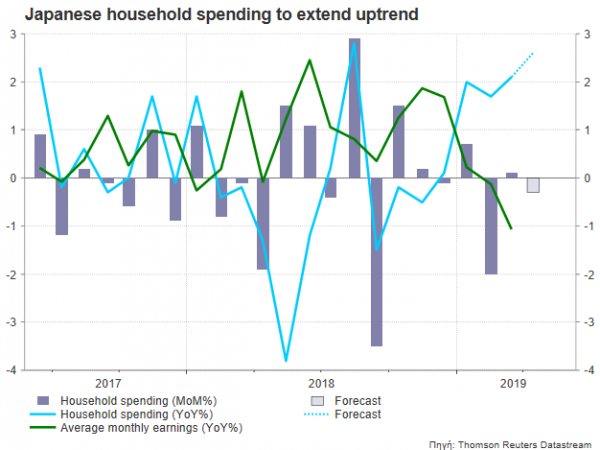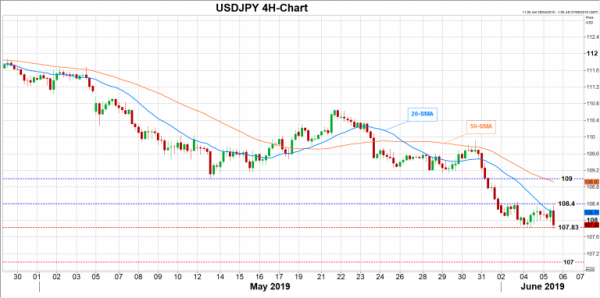The Japanese safe-have yen, as usual, is not expected to react much on Friday midnight when household spending data for the month of April come out. But the numbers may ease worries over a slowing domestic demand that the initial Q1 GDP report generated, giving some relief to the Bank of Japan (BoJ) which has been long struggling to drive inflation to its target.
In the first quarter, the Japanese economy expanded surprisingly by 0.5% q/q, beating forecasts of a mild contraction. Despite that, stats showed that private consumption declined in the aforementioned period, while imports fell more than exports, reflecting deterioration in domestic demand.
According to forecasts, April’s household spending is likely to show a different picture on Friday as analysts predict a steeper rise of 2.6% year-on-year compared to 2.1% in the preceding month. Such an outcome would bring good news to the BoJ policymakers who have been constantly criticized over their super-easy policy. Month-on-month the measure is anticipated to fall by 0.3% after inching up by 0.1% previously.
Despite negative interest rates hurting banks’ profitability, the central bank continues to prioritize inflation as an objective. The massive stimulus has miserably failed to fire up price growth towards its 2.0% goal, but the Bank remains ambitious that inflationary pressures will spiral by 2021. With wages marking the sharpest fall in almost four years in March and trade risks threatening over a global economic rundown, markets in contrast believe that the 2.0% target is likely to remain elusive.
Of course the BoJ, like other major central banks, has already showed willingness to adjust policy to sustain the economy at a healthy path but the kinds of tools it can use seem to be limited at the moment. For instance, lower interest rates would give little space to policymakers to further reduce borrowing costs in case of a recession, while the quantitative easing over the past decade proved fruitless to be extended at a larger scale. Hence among the few and safer options left is a Japanese version of the ECB’s TLTRO program. Credit aid to banks already exists at a zero interest rate and the BoJ could expand that program to further liquidize the banks which in turn could increase cash for companies and households.
Higher household spending would also give the green light to the government to follow its plans and hike the already twice-delayed sales tax from 8% to 10% in October.
Meanwhile in exchange markets, the data may cause little impact, especially on the safe-haven Japanese yen, which is rather strictly driven by factors such as the Sino-US trade developments and the Fed rate strategy. Therefore, any surprise in household spending is expected to be shrugged off. Nevertheless, a descent rally above 108.50 per dollar may reduce negative sentiment in the market, while a closing price above 109 would turn the sell-off from 112.39 less reliable.
On the flip side, a clear break below 107.83 could trigger another bearish wave, probably towards the 107.00 psychological level.















